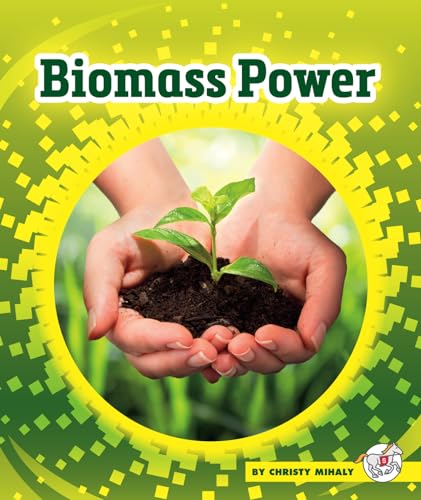Biomass Energy Crops
Biomass Energy Crops Are Energy Efficient
![]() Woody biomass crops are biological and organic materials used to create biofuels for energy production. In nature, Biomass Energy Crops are produced through a process known as photosynthesis, in which the sun’s solar energy is used by plants and other living organisms to produce carbohydrates and sugars.
Woody biomass crops are biological and organic materials used to create biofuels for energy production. In nature, Biomass Energy Crops are produced through a process known as photosynthesis, in which the sun’s solar energy is used by plants and other living organisms to produce carbohydrates and sugars.
Bioenergy is the energy produced by the combustion of biomass materials. Dedicated energy crops are biomass crops grown specifically for the purpose of being used as biofuels. The goal of these energy crops is to be carbon neutral or even carbon negative.
Wood and wood wastes, domestic wastes, agricultural crops and wastes, animal wastes, peat, and aquatic plants are typical solid biomass energy products. The three major forms of biomass energy crops being Solid Biomass (Wood, Incineration), Liquid Fuels (Ethanol, Biodiesel), and Gaseous Fuels (Landfills, Methane).

Almost any combustible organic material has the potential to be used as a renewable energy source. As a result, there is a growing interest in alternative forms of bioenergy technology. Raw biomass materials can be chemically or biochemically treated to produce energy-rich fuels like biofuel, bioethanol, biodiesel, and biogas, to name a few.
Since the discovery of fire many thousands of years ago, biomass has been used in the home for heating and cooking, with the combustion of biomass fuels producing heat. Coal, in fact, is a fossilised form of biomass that has been compacted over millions of years to produce a concentrated source of energy.
Then all fossil fuels, including coal, oil, and natural gas, are simply ancient forms of biomass derived from dead plants and animal remains. But is biomass energy renewable.
The Potential of Biomass Energy Crops
The use of biomass as a bioenergy resource has enormous potential. With technological advancements, it is now possible to convert raw organic biomass, known as feedstock, into various forms of energy, such as electricity, heat, liquid or gaseous fuels, and processed solid fuels, simply by using waste to energy conversion processes.
To generate electrical energy, the heat from the thermal combustion process is converted into steam, which drives turbines to generate electricity. Direct combustion, or “direct-fired” combustion is used for the majority of biomass energy electrical generation were the biomass is burned in the presence of air.
Today, there is a lot of interest in the combustion of solid biomass as part of a process known as “cofiring.” Cofiring is the process by which raw biomass feedstock in the form of wood chips or compacted pellets is combined with traditional fossil fuels in power plants to generate electricity.
Because biomass has a lower energy content per pound than fossil fuels, cofiring is usually done by mixing biomass with coal, but biomass can also be cofired with petroleum oil.
There are numerous benefits to using biomass energy as a renewable energy source. For starters, wood and waste materials can be found almost anywhere, and burning of solid waste as part of a waste to energy conversion process reduces landfill usage, reducing the potential pollution of rivers and clean water supplies. Cofiring with coal in biomass power plants reduces environmental issues like acid rain and smog, as well as greenhouse gases like carbon dioxide and methane.
However, the environmental impacts of burning biomass resources includes the use of large amounts of cultivated land for biomass production in cofiring applications. This land could be used for other purposes such as growing food. More plants and trees must also be planted to meet demand, as they will be used in greater quantities.
Biomass Energy is a sustainable source of energy because more trees and crops can be grown to meet demand; however, producing and converting biomass into suitable fuels and generating electricity comes at an additional cost.
To be sustainable, biomass energy crops require a large amount of land to grow the trees and crops, reducing the amount of land available for agriculture and food production. Although biomass is a form of renewable energy, it is not ideal because solid biomass fuels have a much lower energy content than fossil fuels. There are better alternative energies available.
To gain a better understanding of “Biomass and Bioenergy,” to learn more about the various biomass energy crops available, or to investigate the benefits and drawbacks of biomass and bioenergy. Then order your copy of one of the top “Biomass Books” about Biomass Power For Energy Now and in the Future from Amazon today to learn more about making biomass pellets to burn in your home to save money and the environment.











Biomass energy crops are such an exciting way to tap into renewable energy! The idea of using everyday organic waste to create power feels like the perfect blend of sustainability and efficiency.
College waste to energy project. I am a college student researching Waste-to-Energy incineration plants. I am writing a paper on it and your knowledge on the subject would be beneficial to me, please reply to this.
Gary
Hi guys,
I’m currently trying to make briquettes out of grass and garden waste feedstocks.
I’ve had some “random” ones that work well, and we have made some good logs but not consistent to actually make a store of them.
We have some very soft briquettes that crack after pressing them, and fall apart, or they just fall apart as they’re coming out of the press. I wonder if our feedstock is too dry, it’s in a sawdust form less than 3mm.
Could someone give some pointers on what we’re doing wrong ?
Thanks